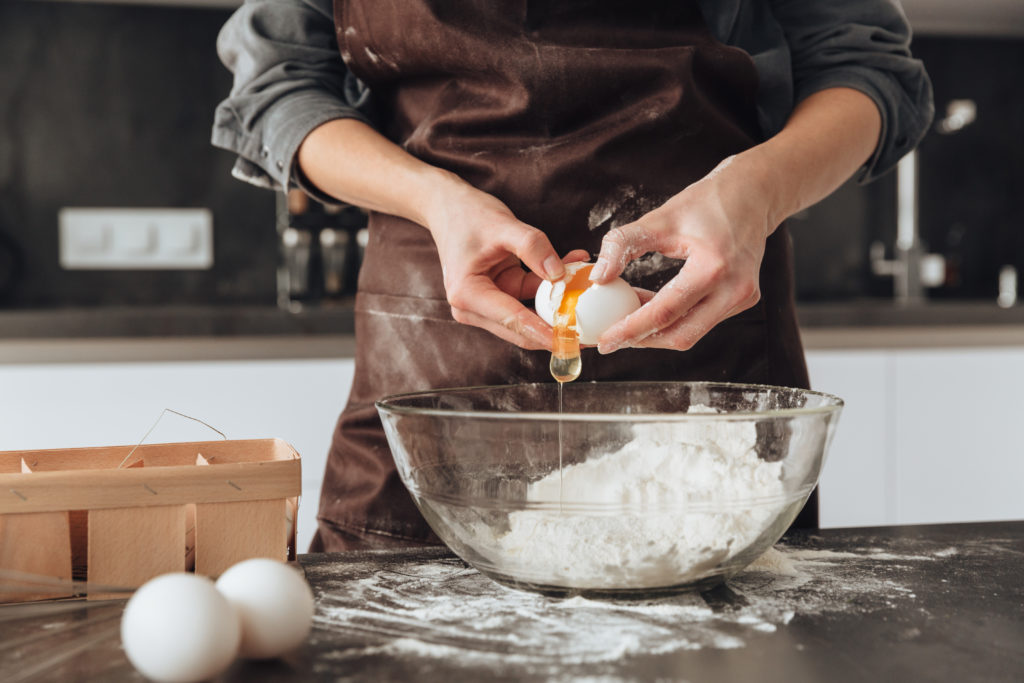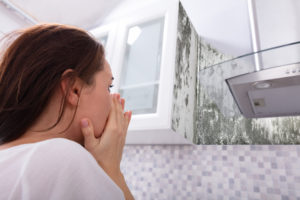What are the key ingredients for baking indoor mold?
There are several key components (or ingredients) required for indoor mold spores to become active and grow. Just like baking a cake, if we can eliminate or reduce just one of the ingredients, we are able to limit the conditions in which it is able to thrive. “To prevent mold problems in our homes, we need to understand how mold grows and learn to control the conditions that lead to mold growth.” – Kathleen Parrott, Ph.D., Professor of Housing at Virginia Tech
Here are the ingredients:
“In order to grow, molds require:
- A Food Source
- Appropriate temperature
- Oxygen
- Adequate moisture
“Combining these components can be damaging. Parrot states that “the problem is when there is an excess of mold growth in our buildings and the mold growth damages building materials or threatens our health”.1
This is not the type of cake you want baking inside of your home. Let’s take a closer look at each ingredient.
FOOD SOURCE
Indoor mold spores are everywhere and just like us, they need food to survive. These spores feed off of digestive organic matter such as: pet dander, dust, skin cells, and organic cellulose-based materials (wood, drywall, fabrics, and glues) which make them extremely difficult to remove from an environment. Since we cannot control molds’ food source, we cannot eliminate this ingredient.
TEMPERATURE
Indoor mold spores thrive between 50-80 degrees Fahrenheit. A typical residential home sets their house between 67-78 degrees throughout the year. Since these temperatures overlap, we cannot eliminate the temperature to keep mold from growing.
OXYGEN
A mold spore is a living organism called obligate aerobe. Obligate Aerobes rely on oxygen in order to live and grow. Like us, molds require oxygen to metabolize substances, like sugars, in order to obtain energy. Again, this ingredient is one that cannot be removed.
MOISTURE
The CDC (Centers for Disease Control and Prevention) states, “When mold spores drop on places where there is excessive moisture, they will grow.” Relative humidity is an important factor to consider. The level of humidity in your home increases every time you cook, bathe, shower, clean, or even breathe. Humidity is the concentration of water vapor present in the air. When there is high indoor humidity, there is too much moisture in the air. Excess moisture not only causes discomfort but can quickly lead to property damage and health hazards. The recommended relative humidity for indoor environments is from 30-50%.
According to the EPA, “The key to mold control is moisture control.“3 The difference between whether mold grows in your home or not comes down to whether you have a moisture problem. Moisture is the one ingredient we can control.
The MOISTURE Ingredient and how to REMOVE it.
Sources:
Virginia Polytechnic Institute and State University; Kathleen Parrott, Ph.D. 2009, Virginia Cooperative Extension, accessed April 1, 2022
https://vtechworks.lib.vt.edu/bitstream/handle/10919/50219/2901-7020.pdf?sequence=1
Centers for Disease Control and Prevention | Chapter 5: Indoor Air Pollutants and Toxic Materials, accessed March 31,
EPA: United States Environmental Protection Agency,




